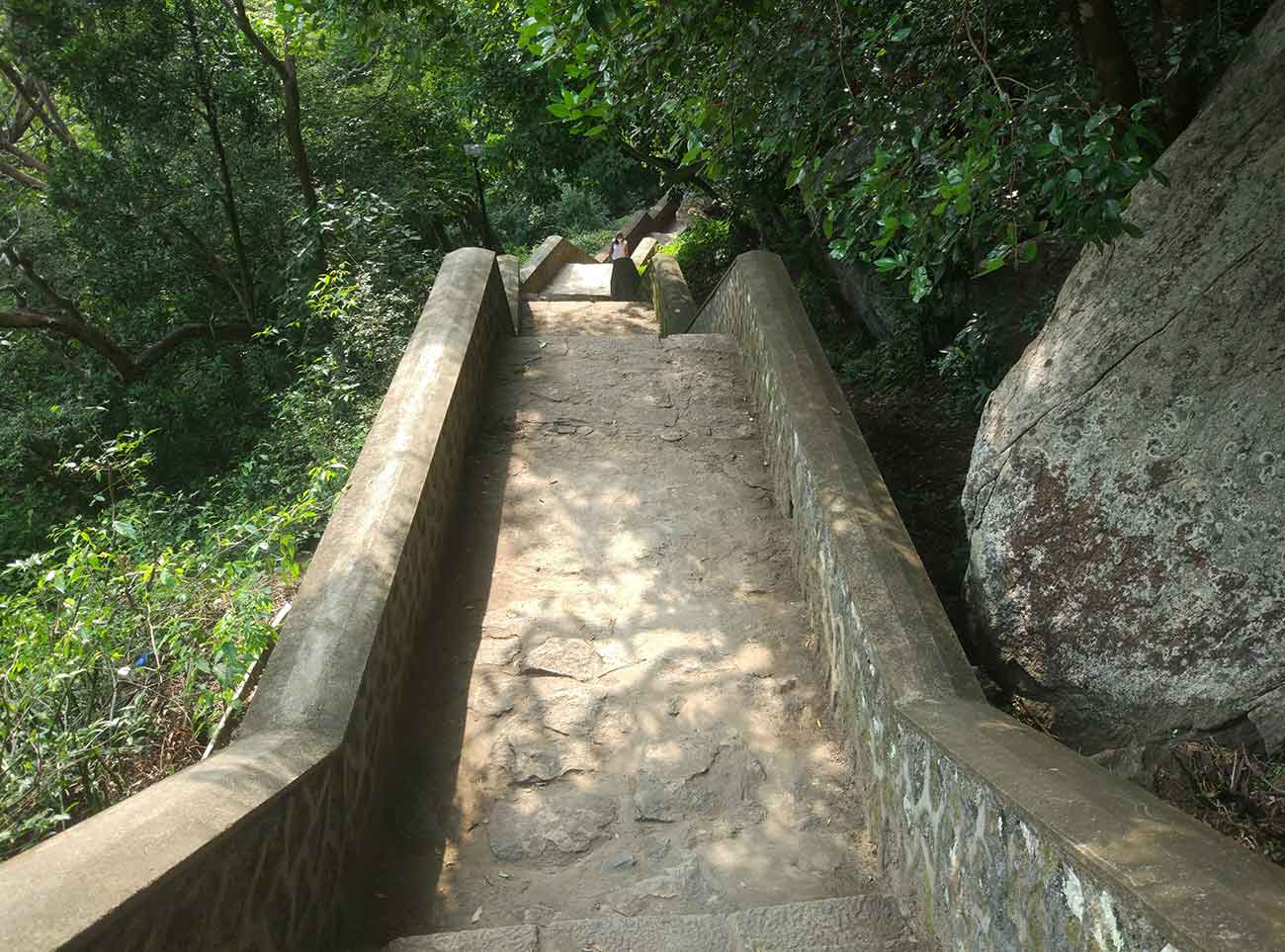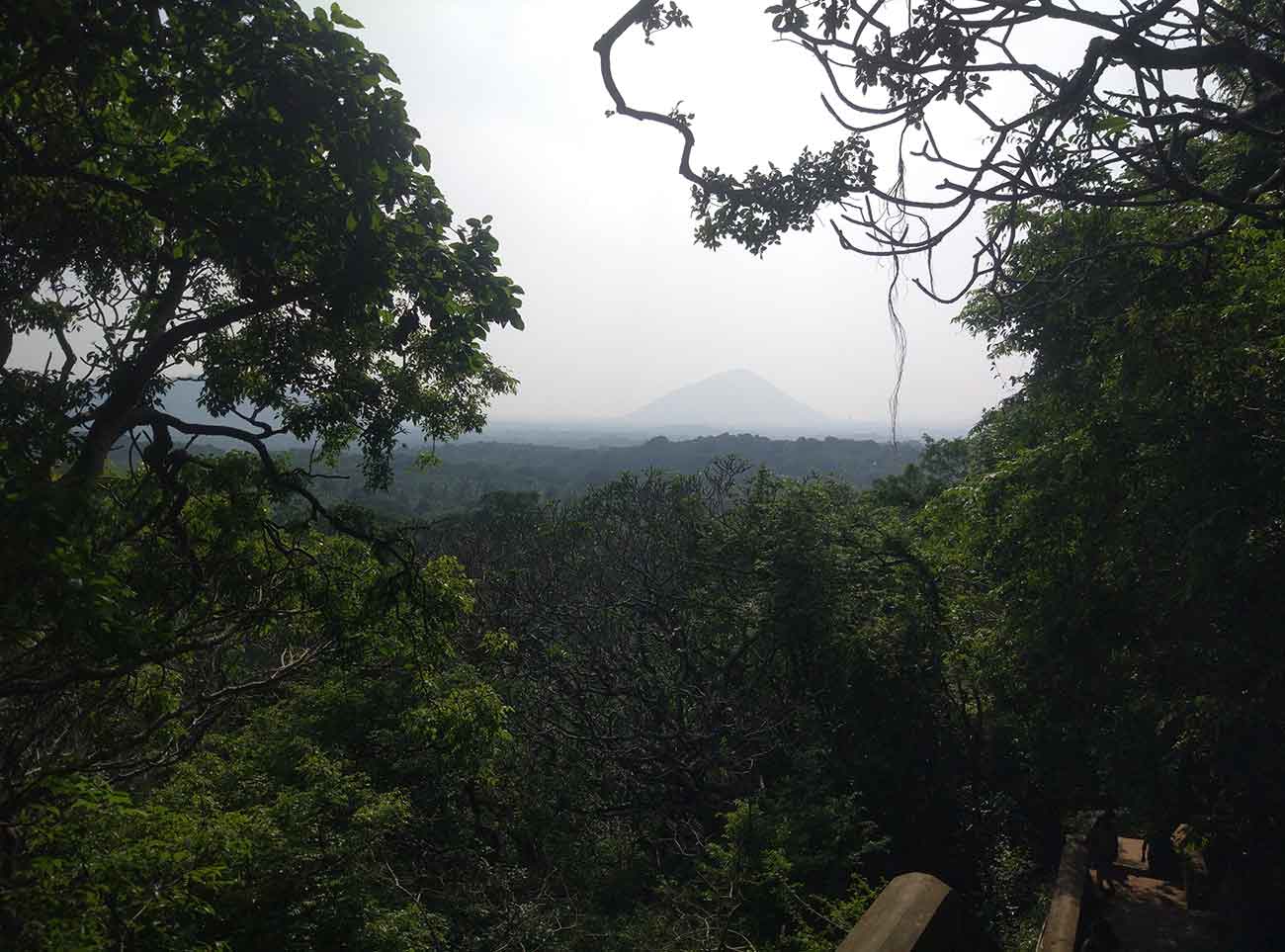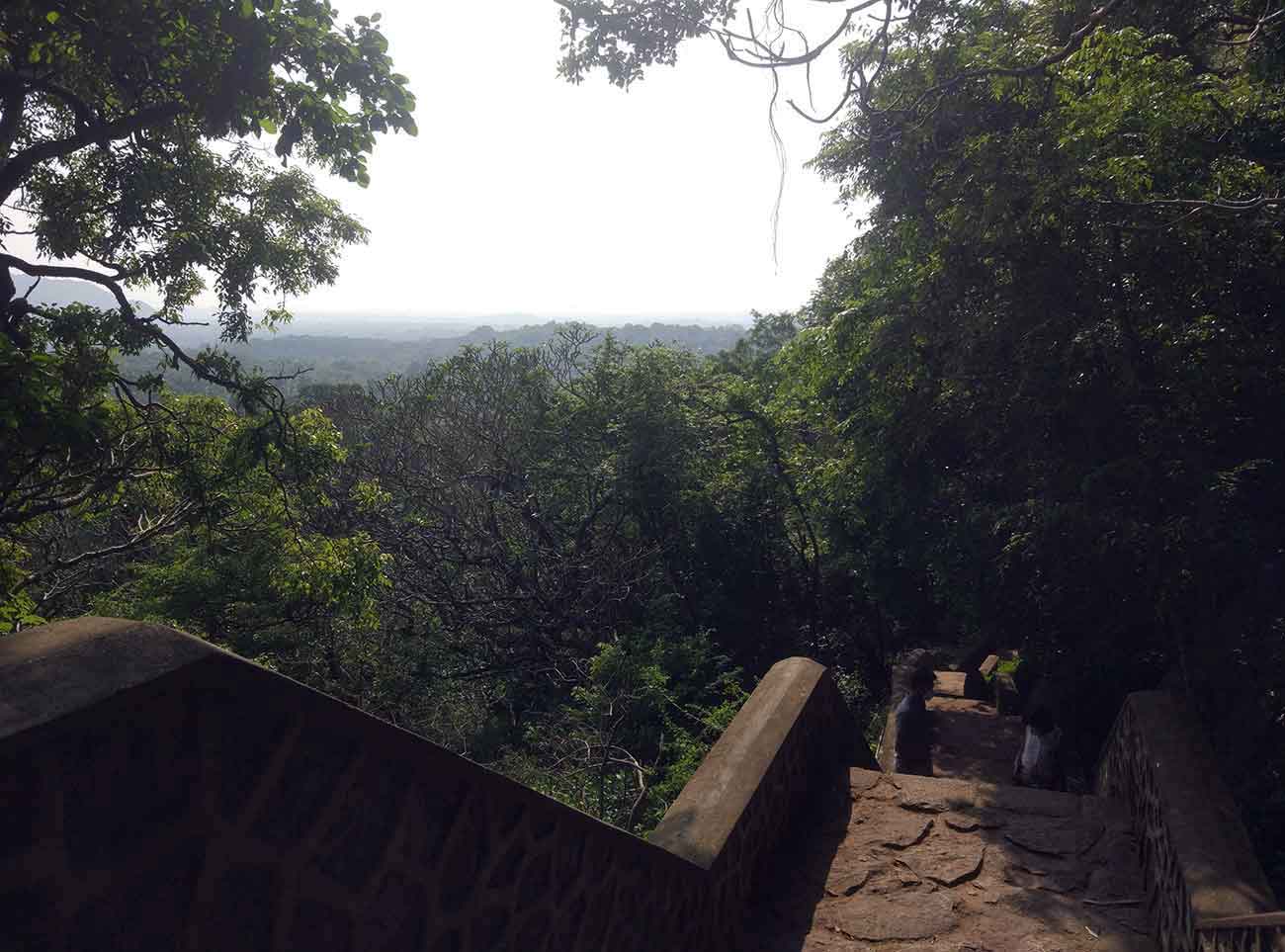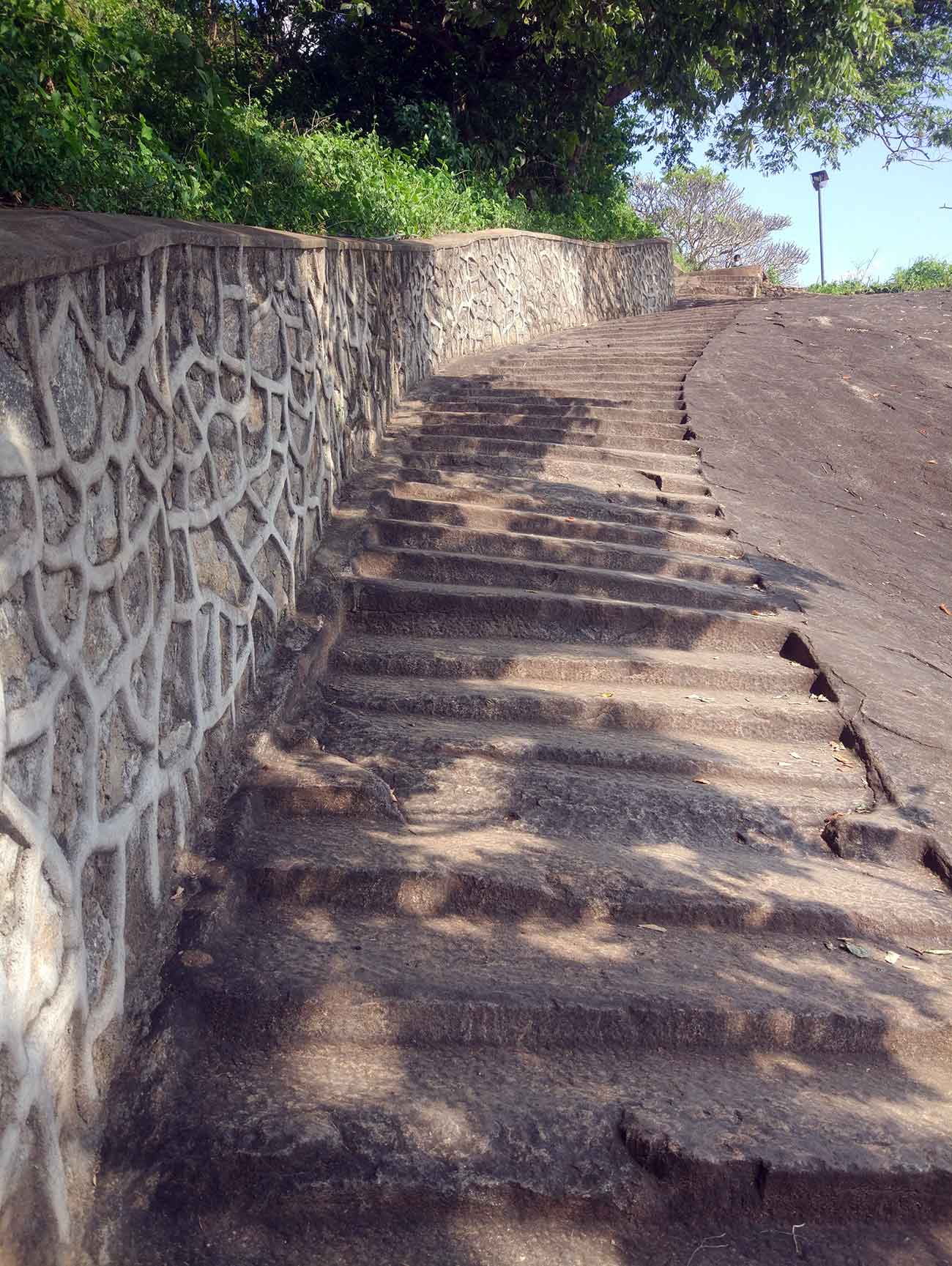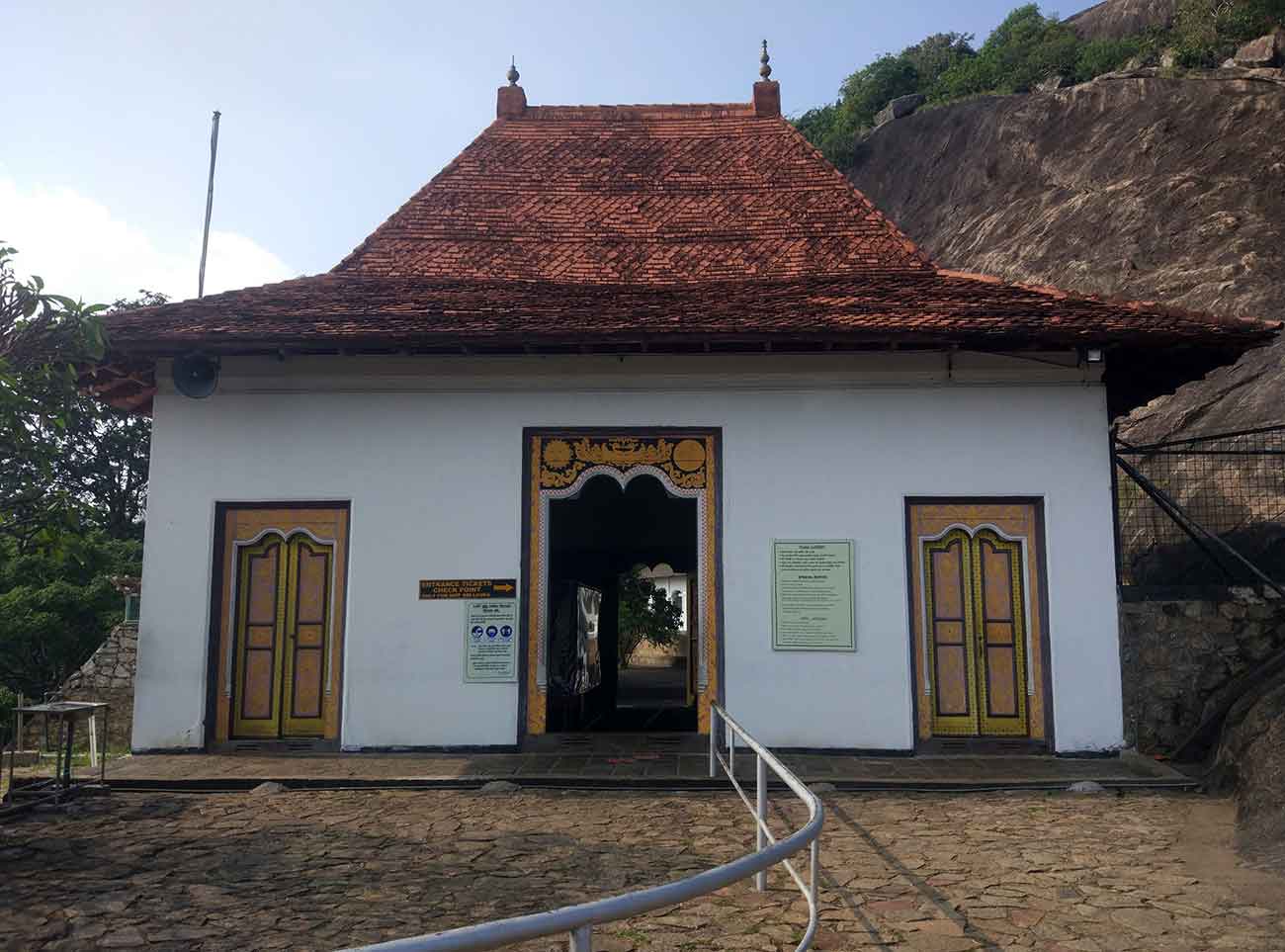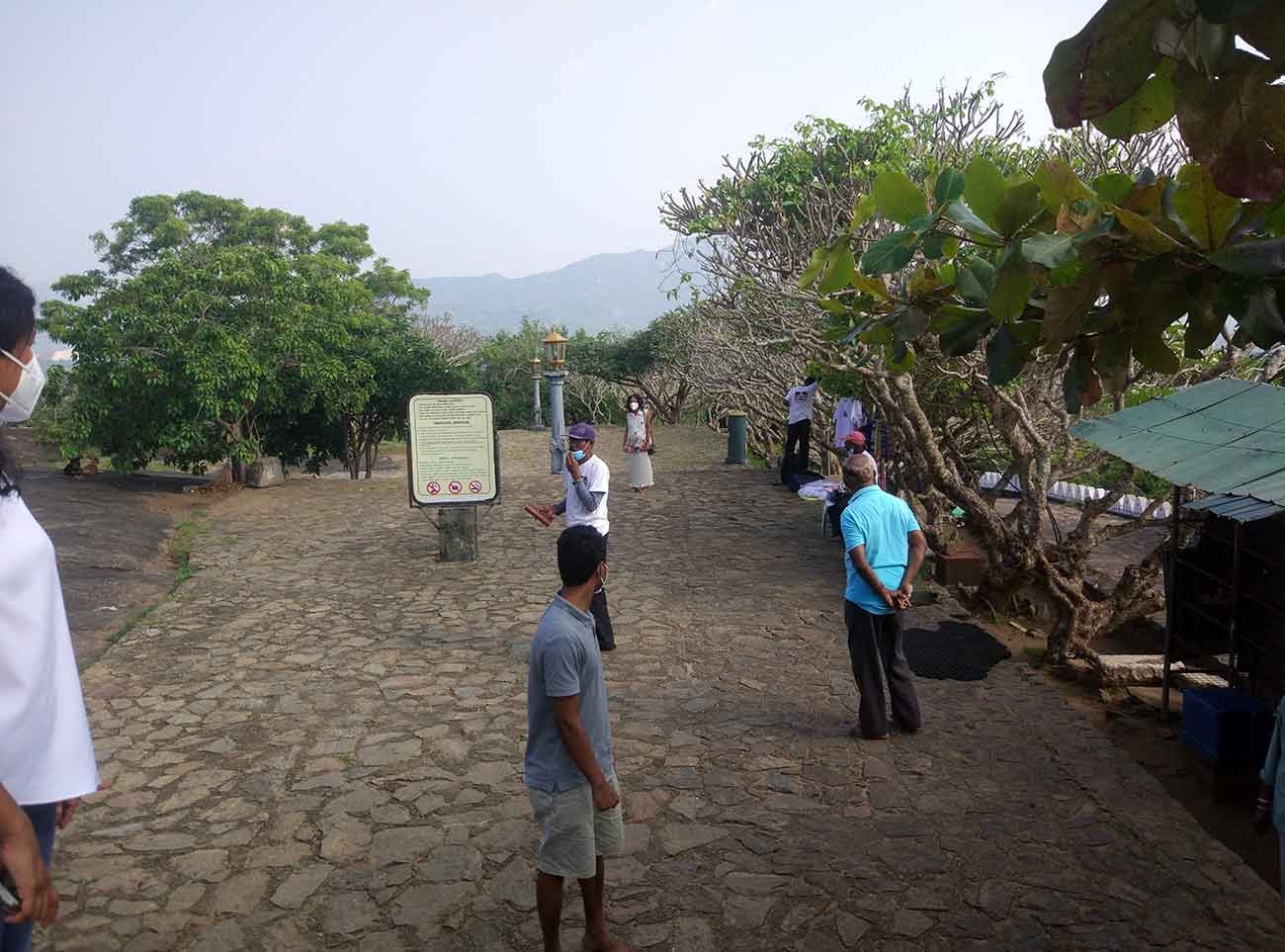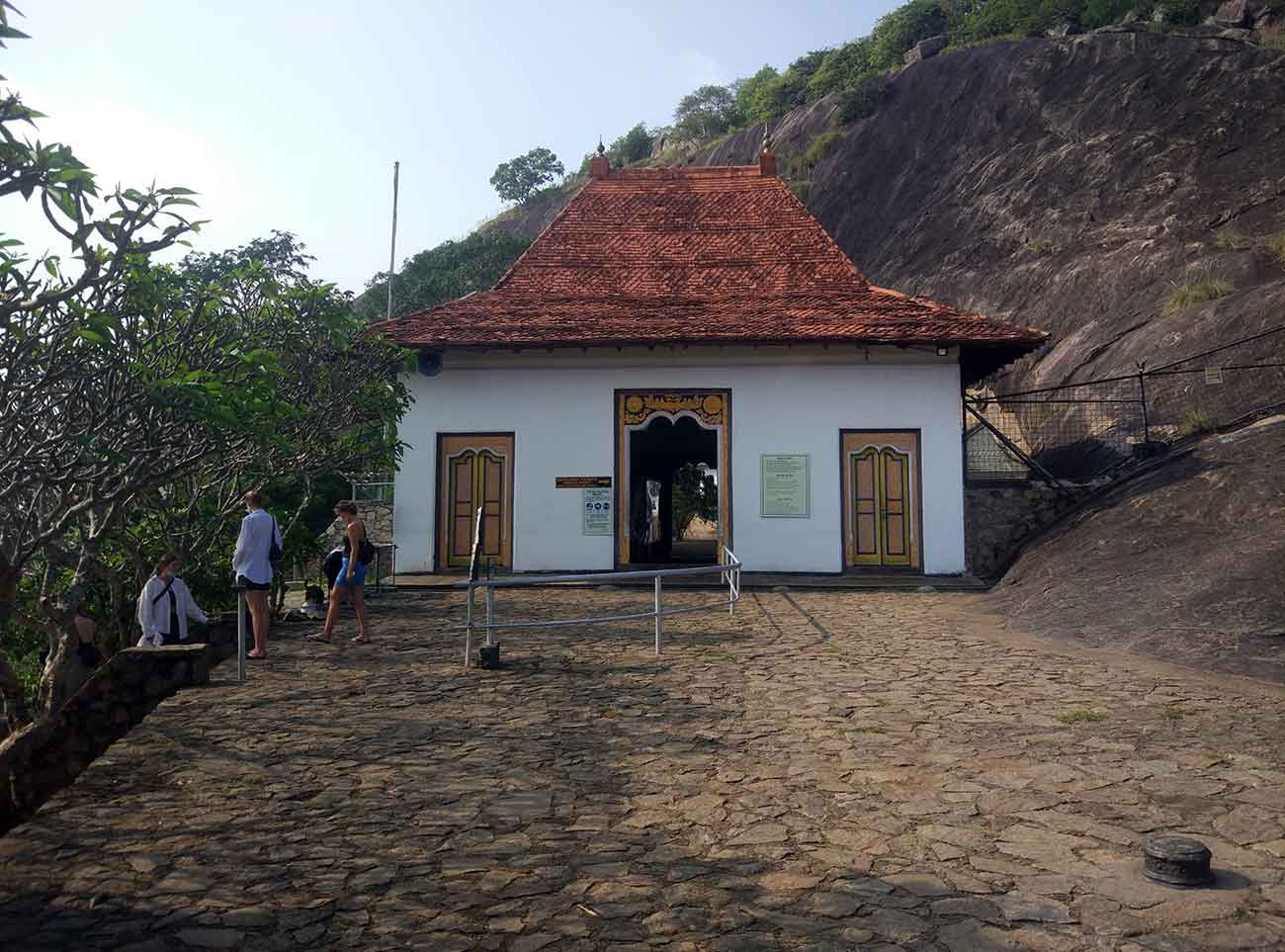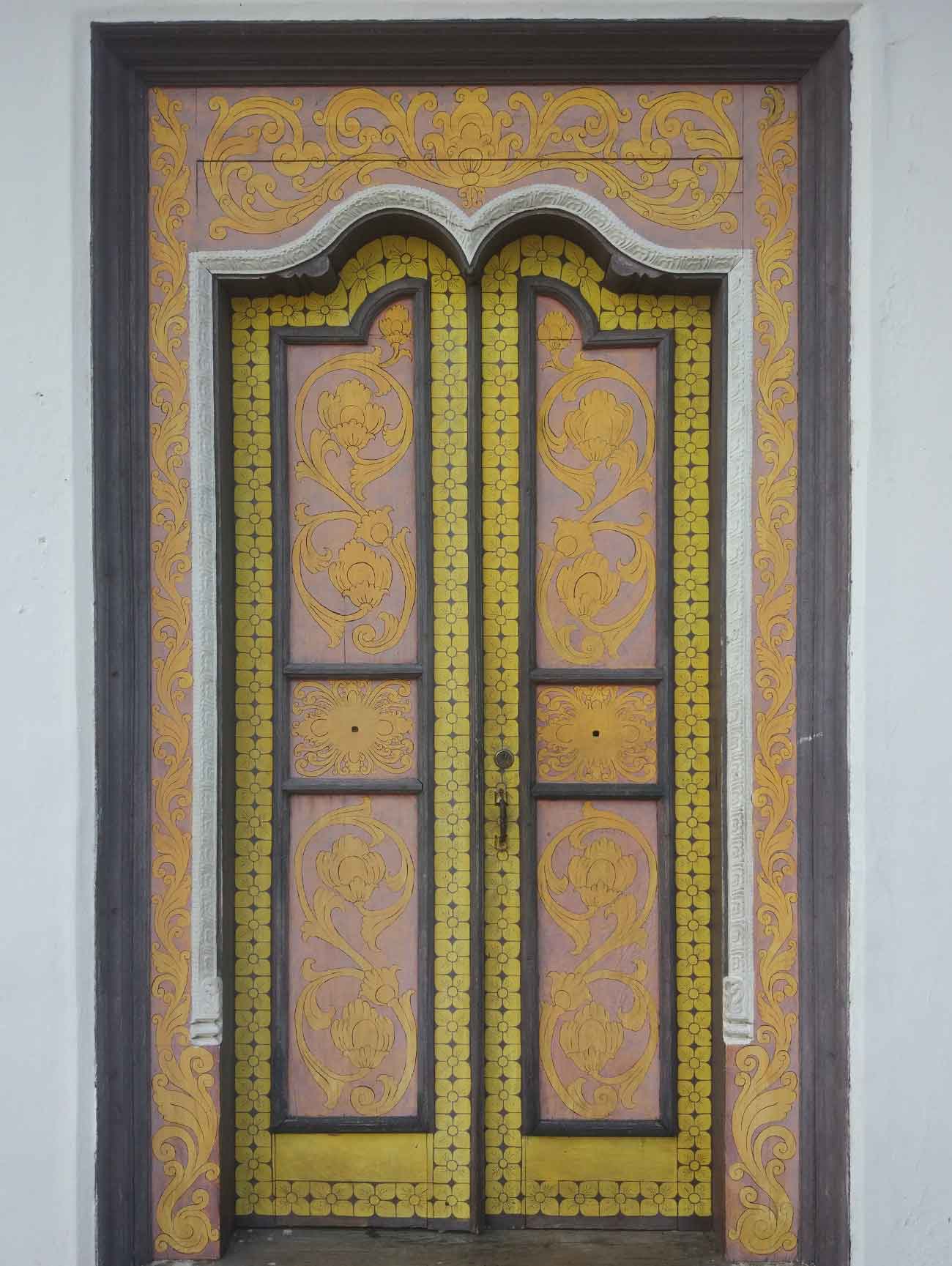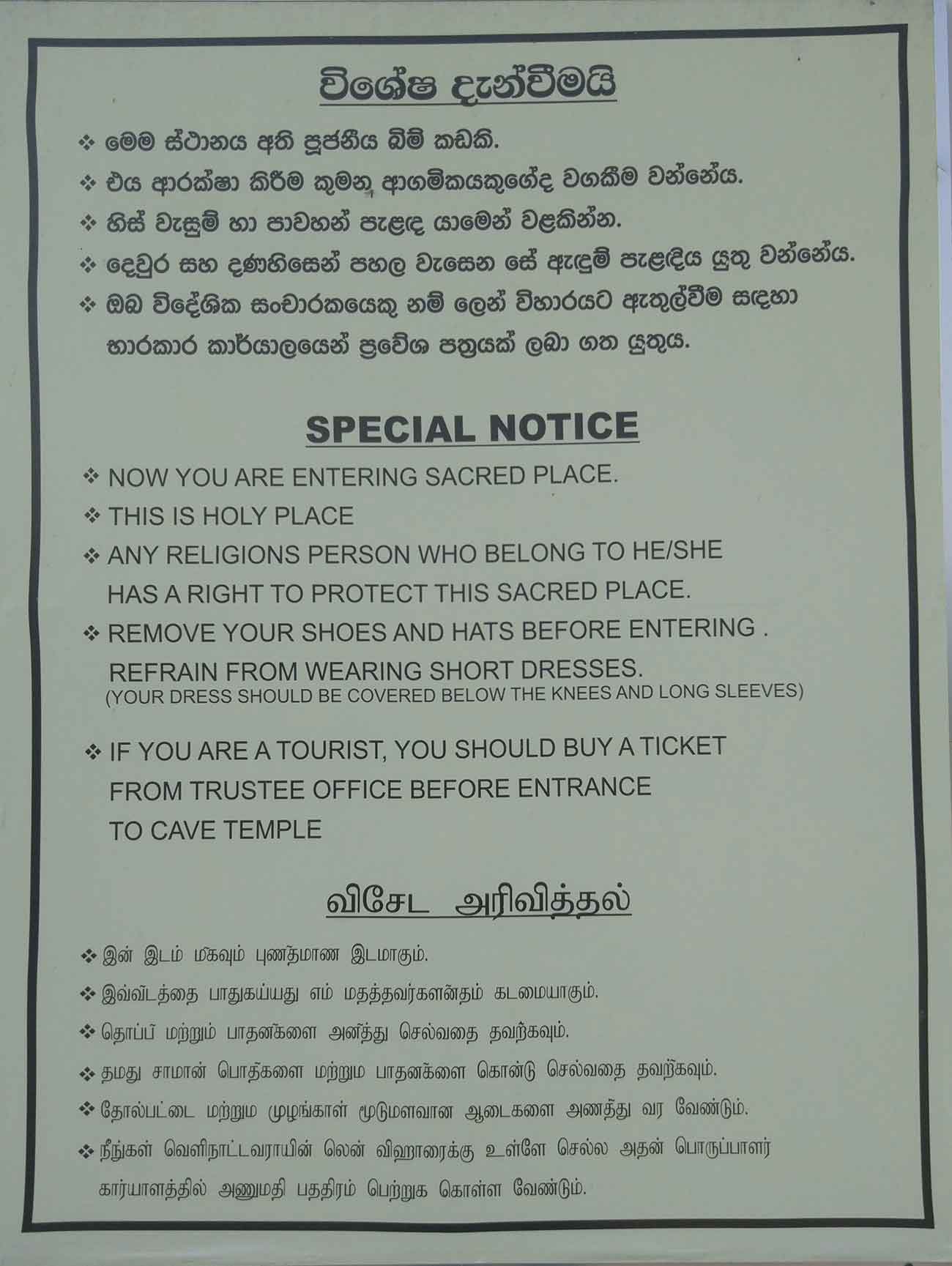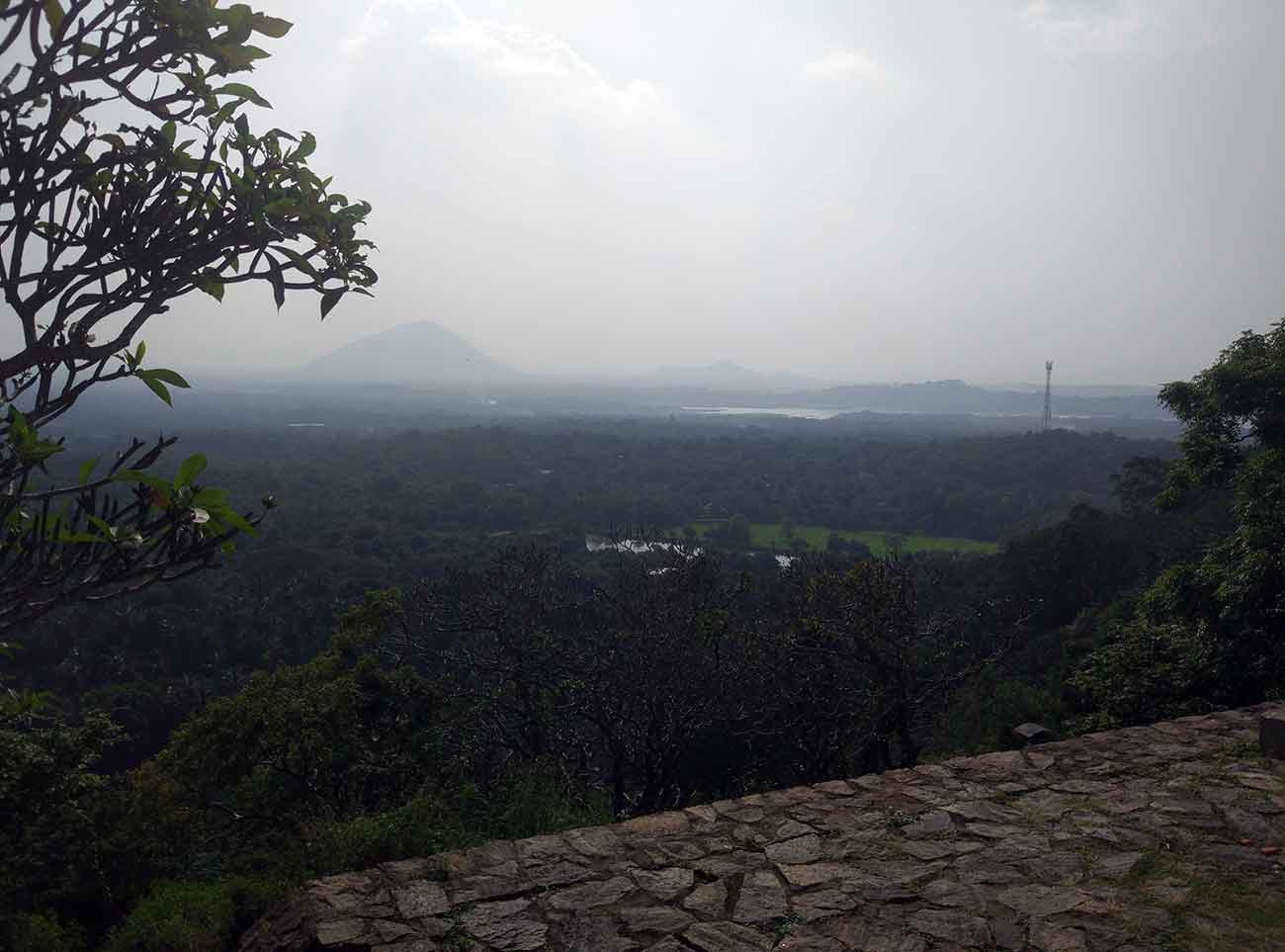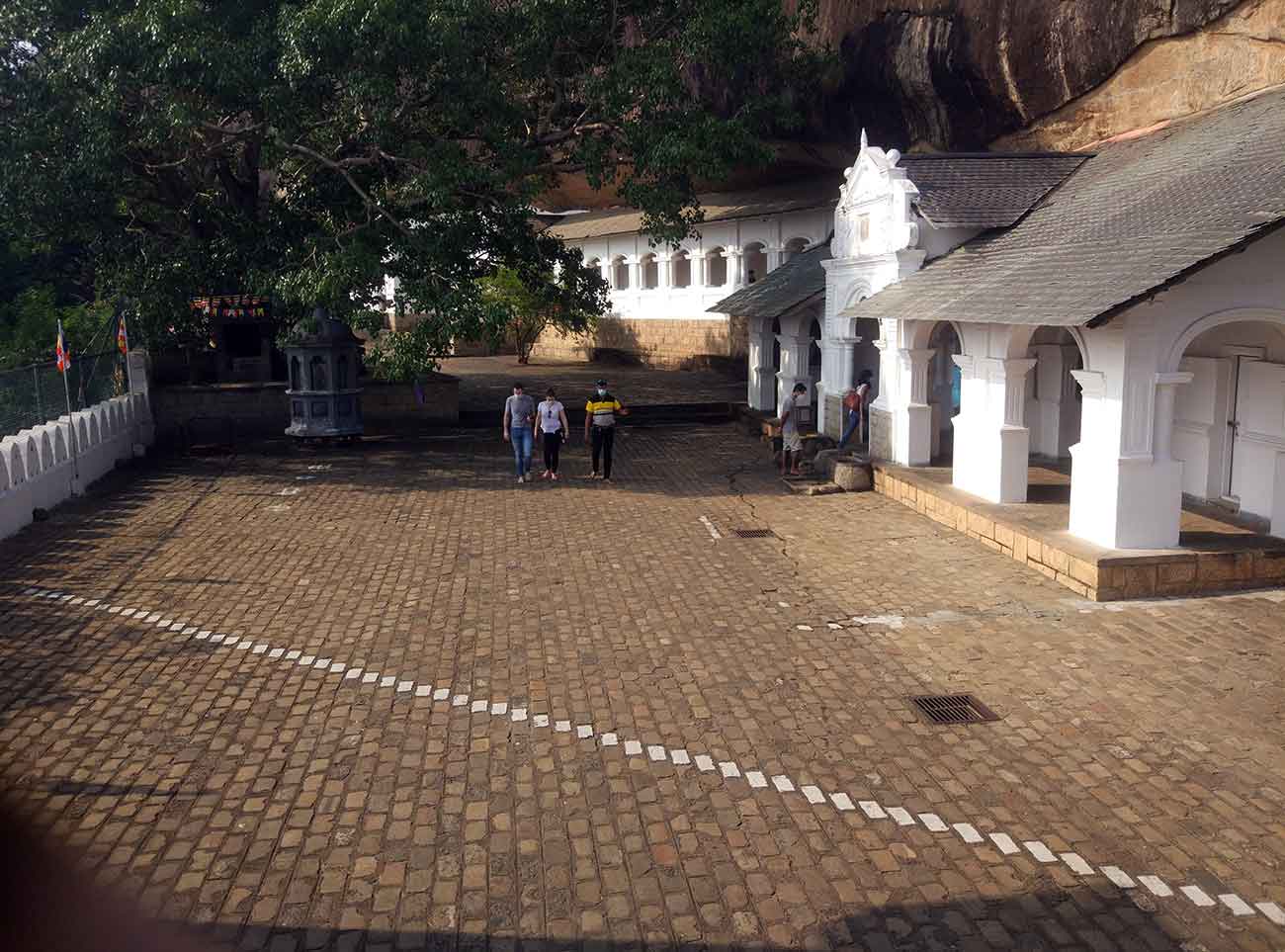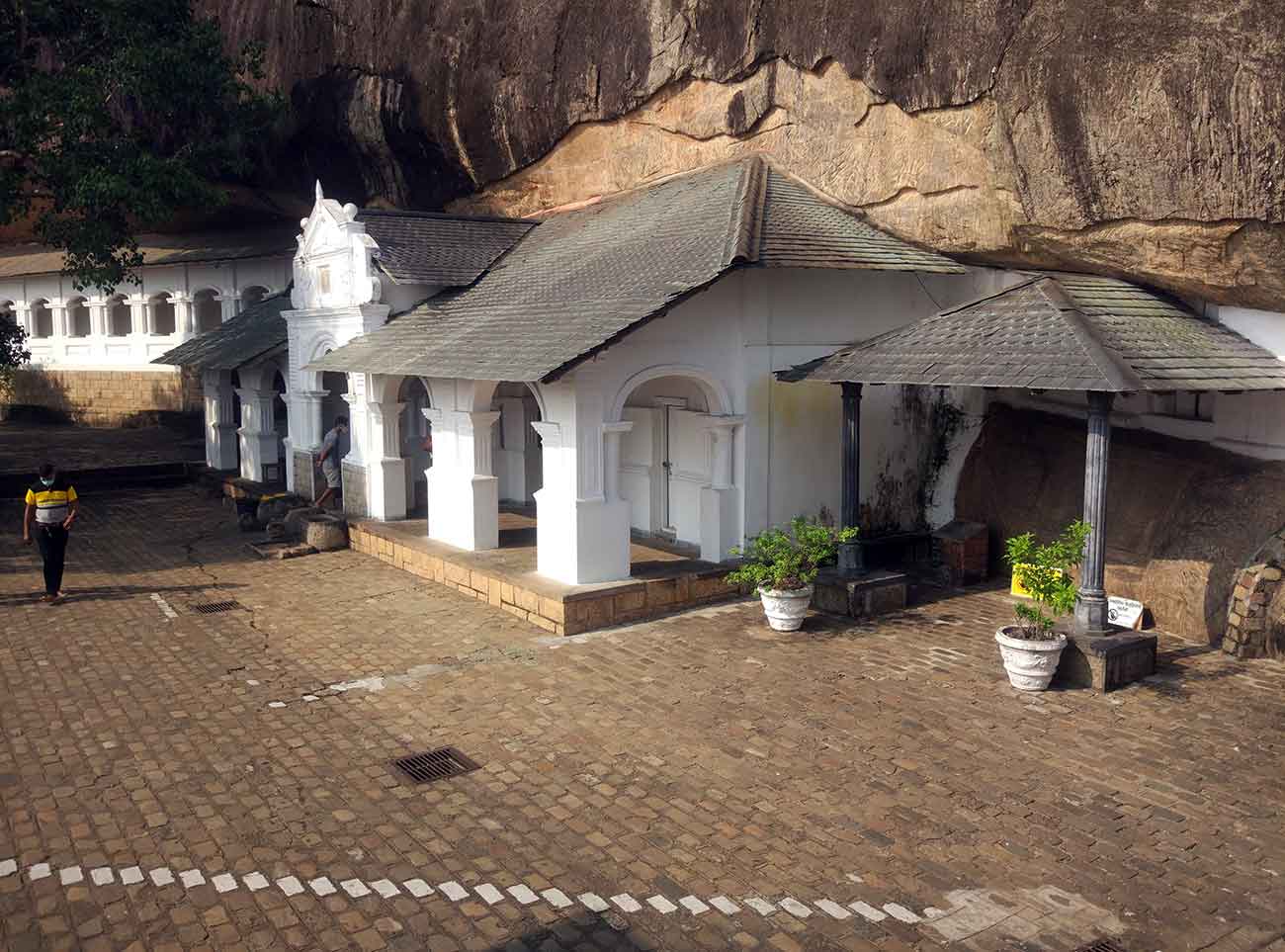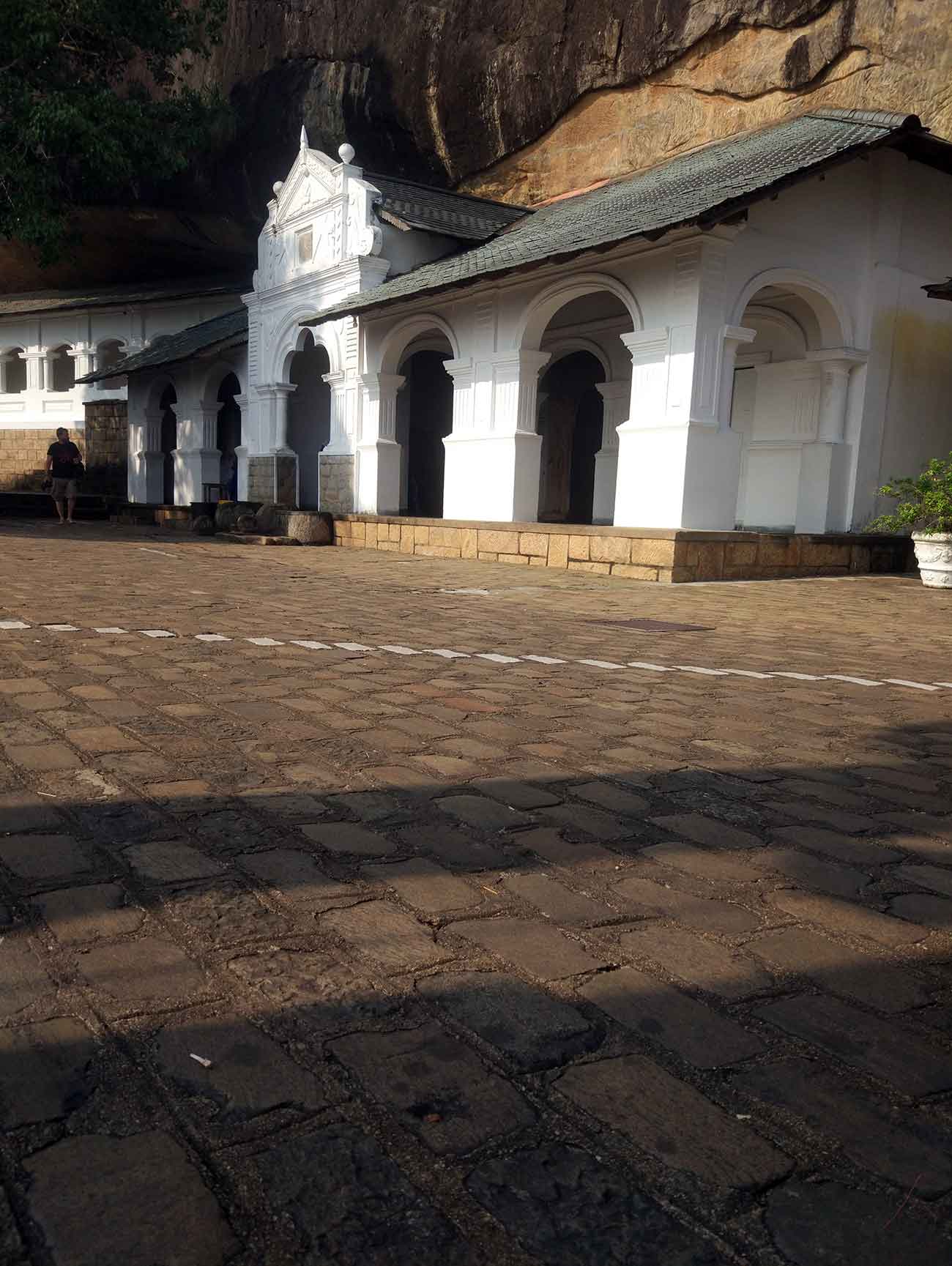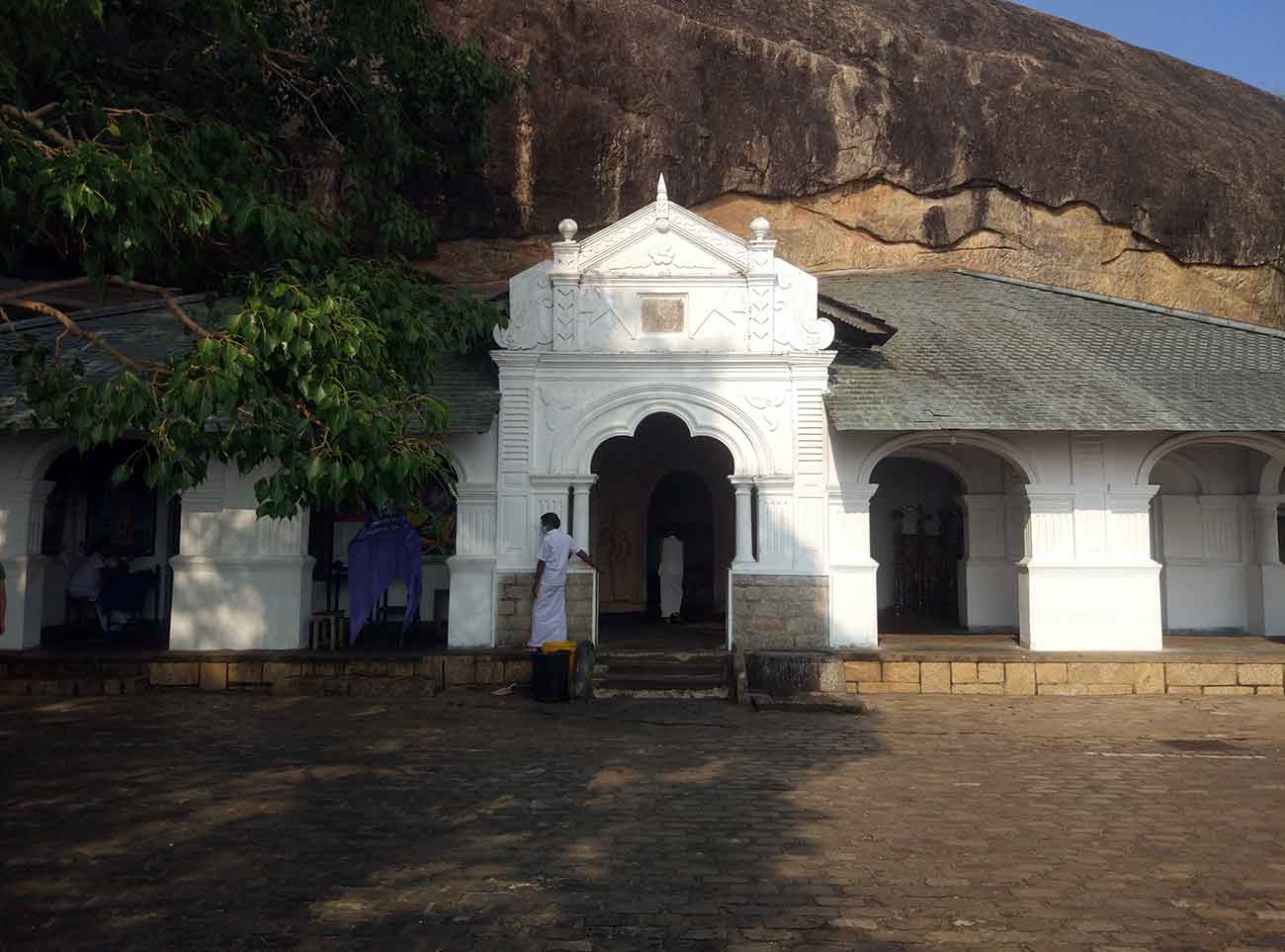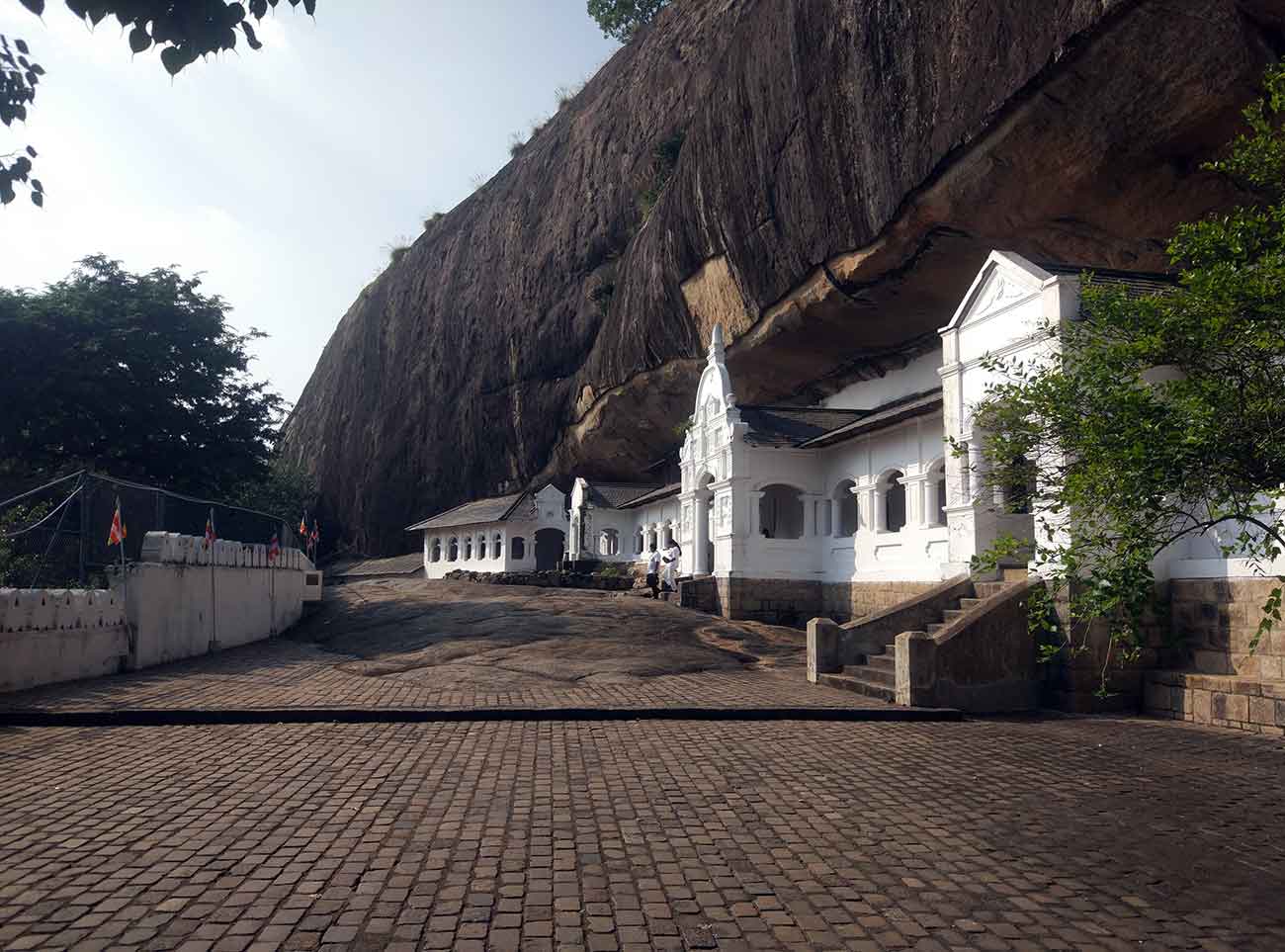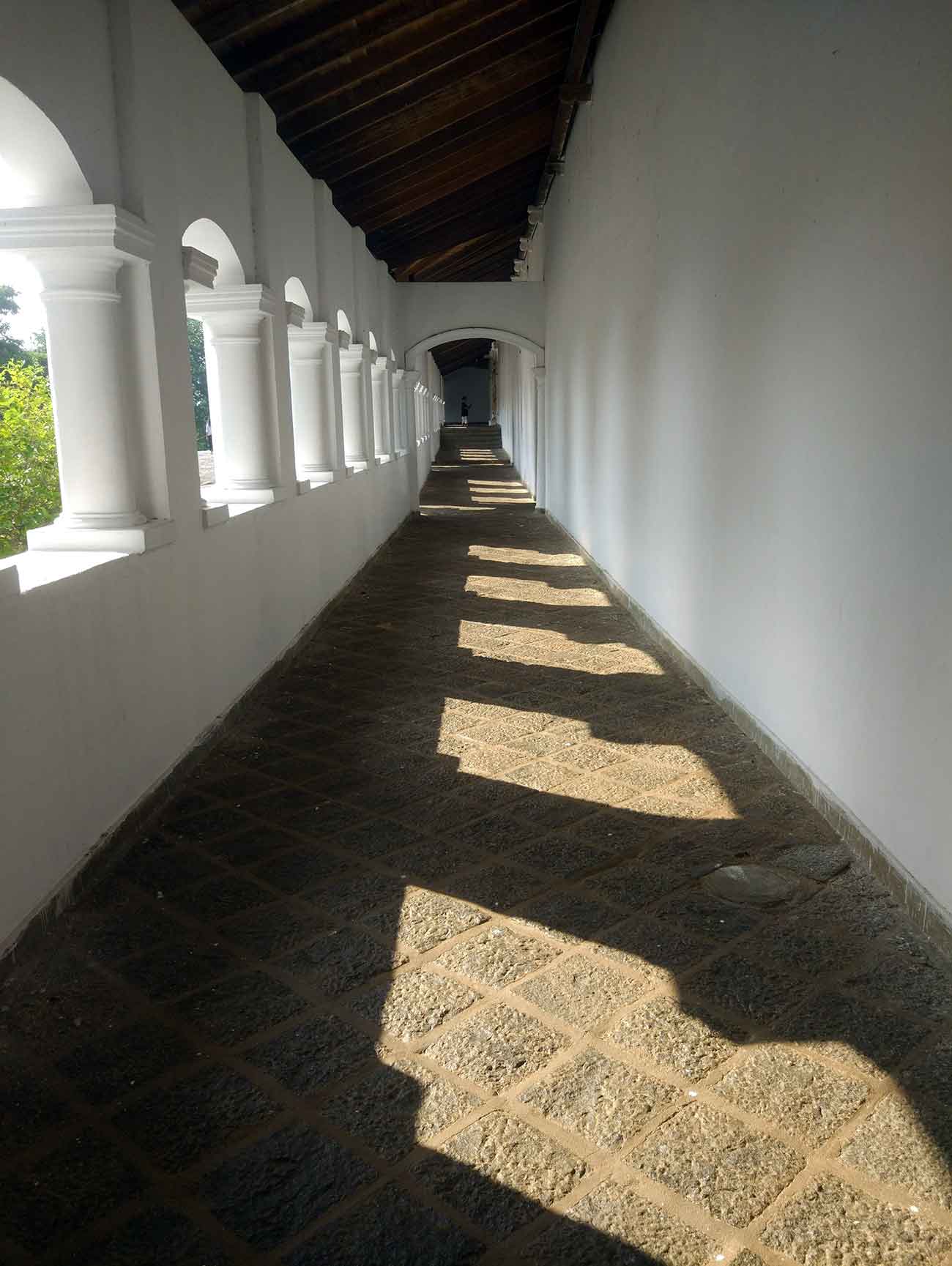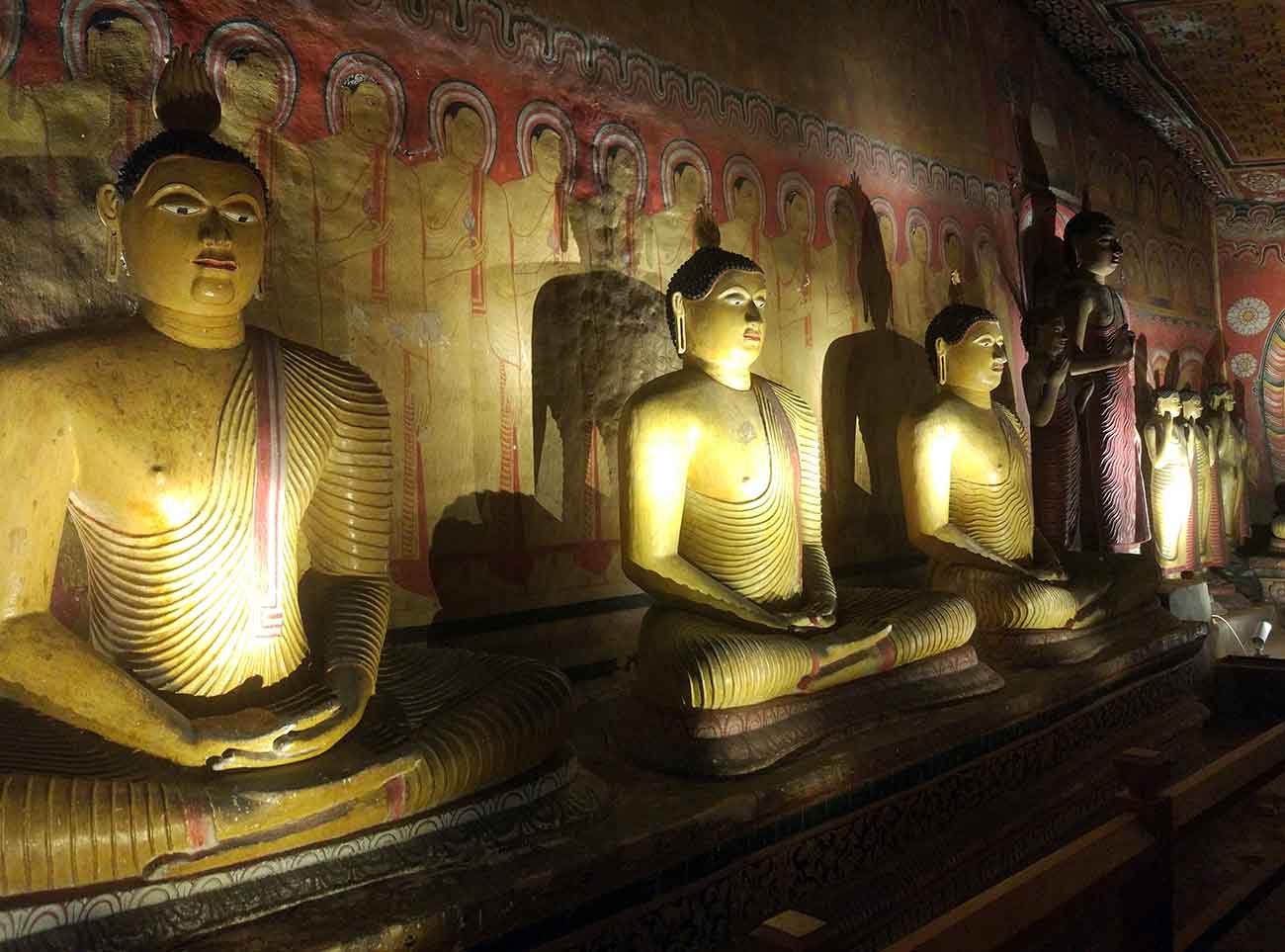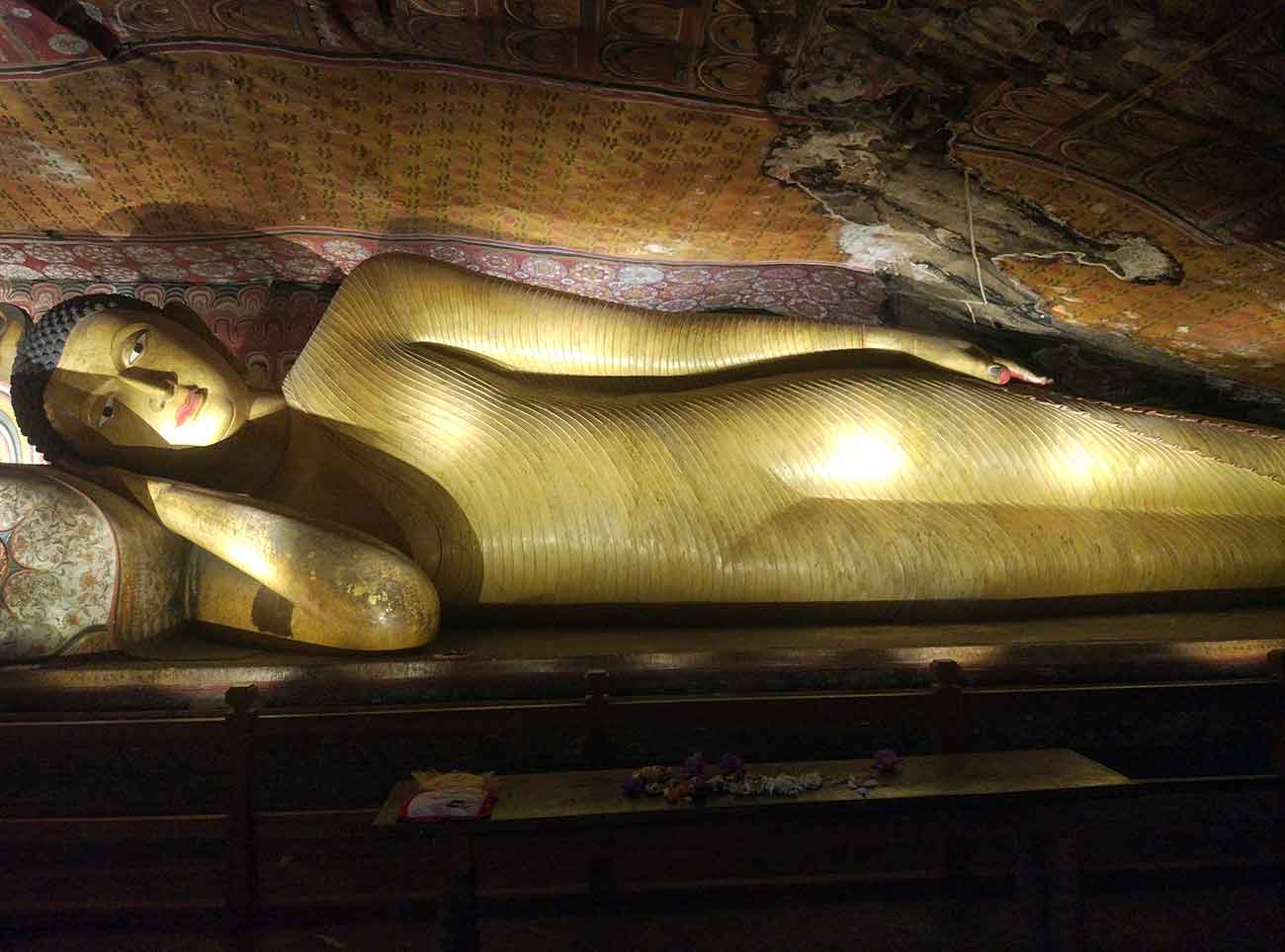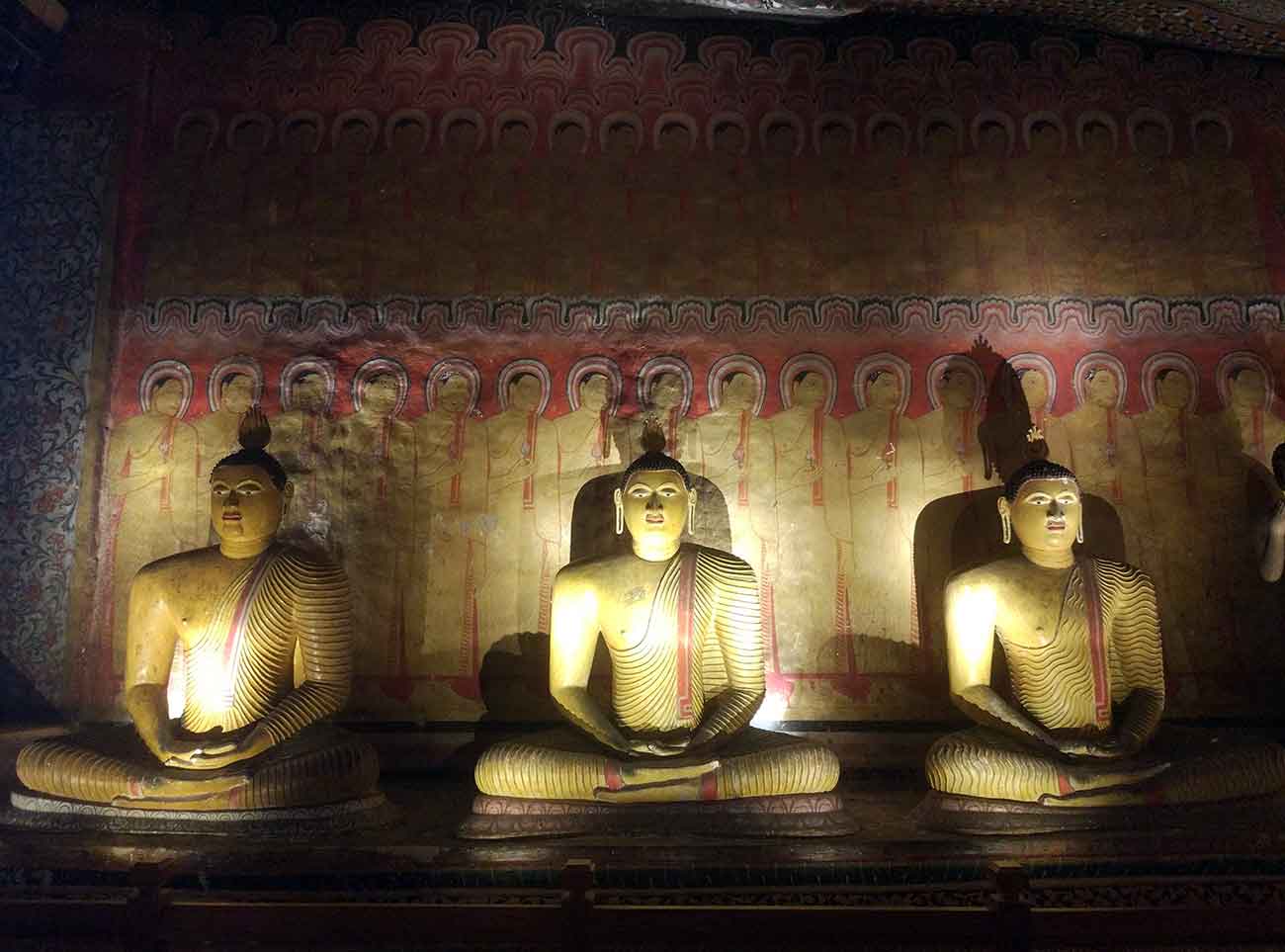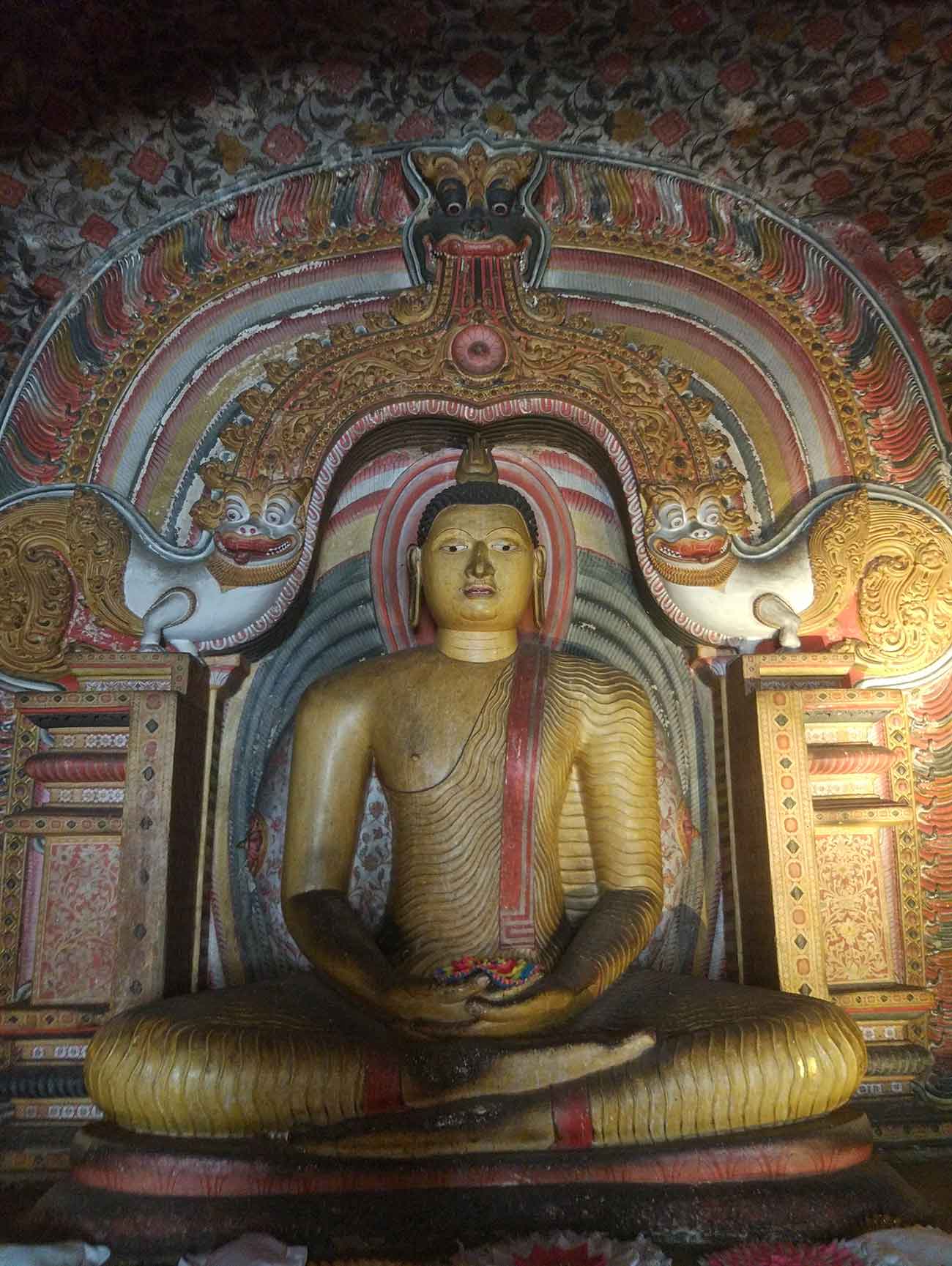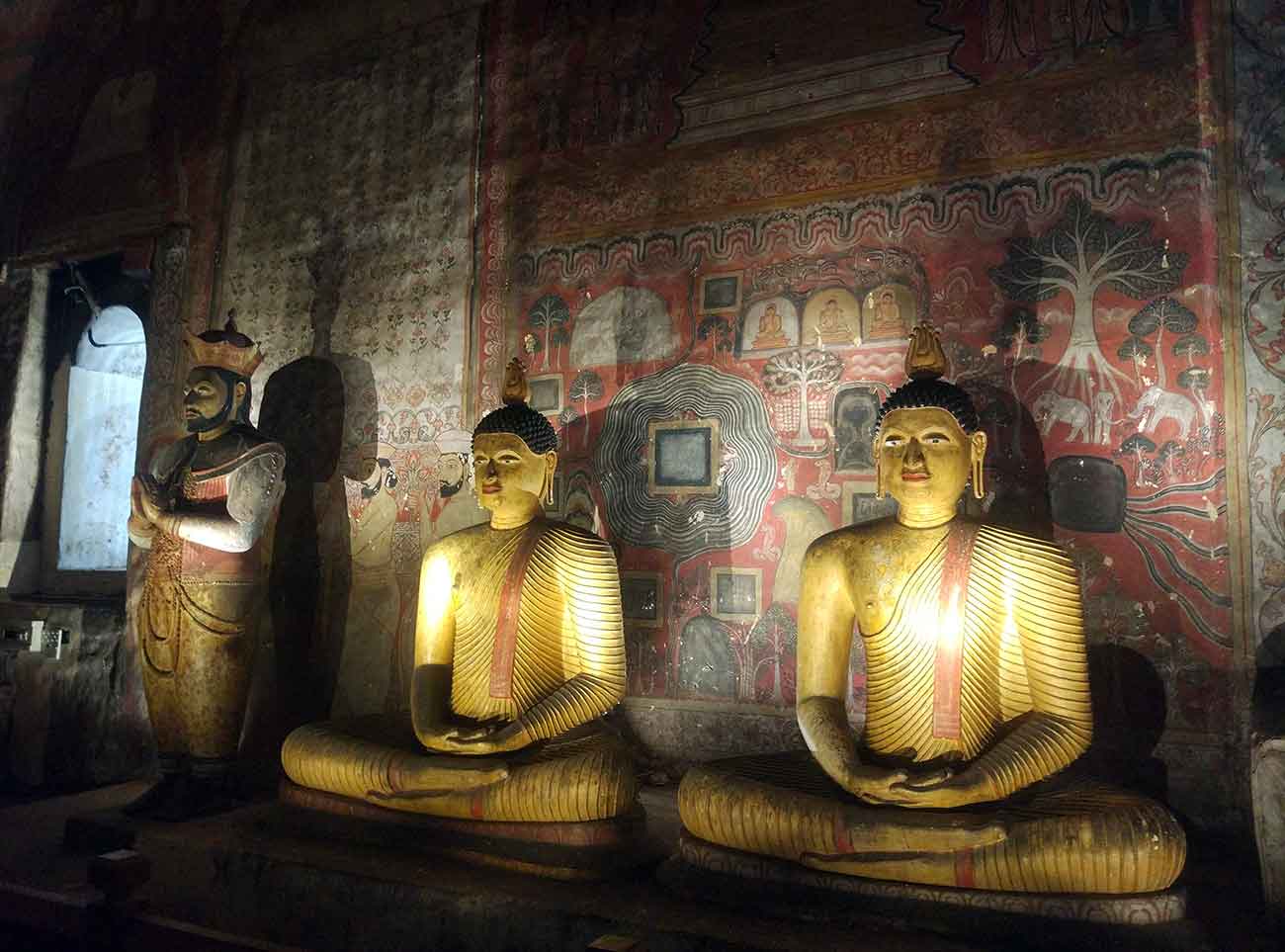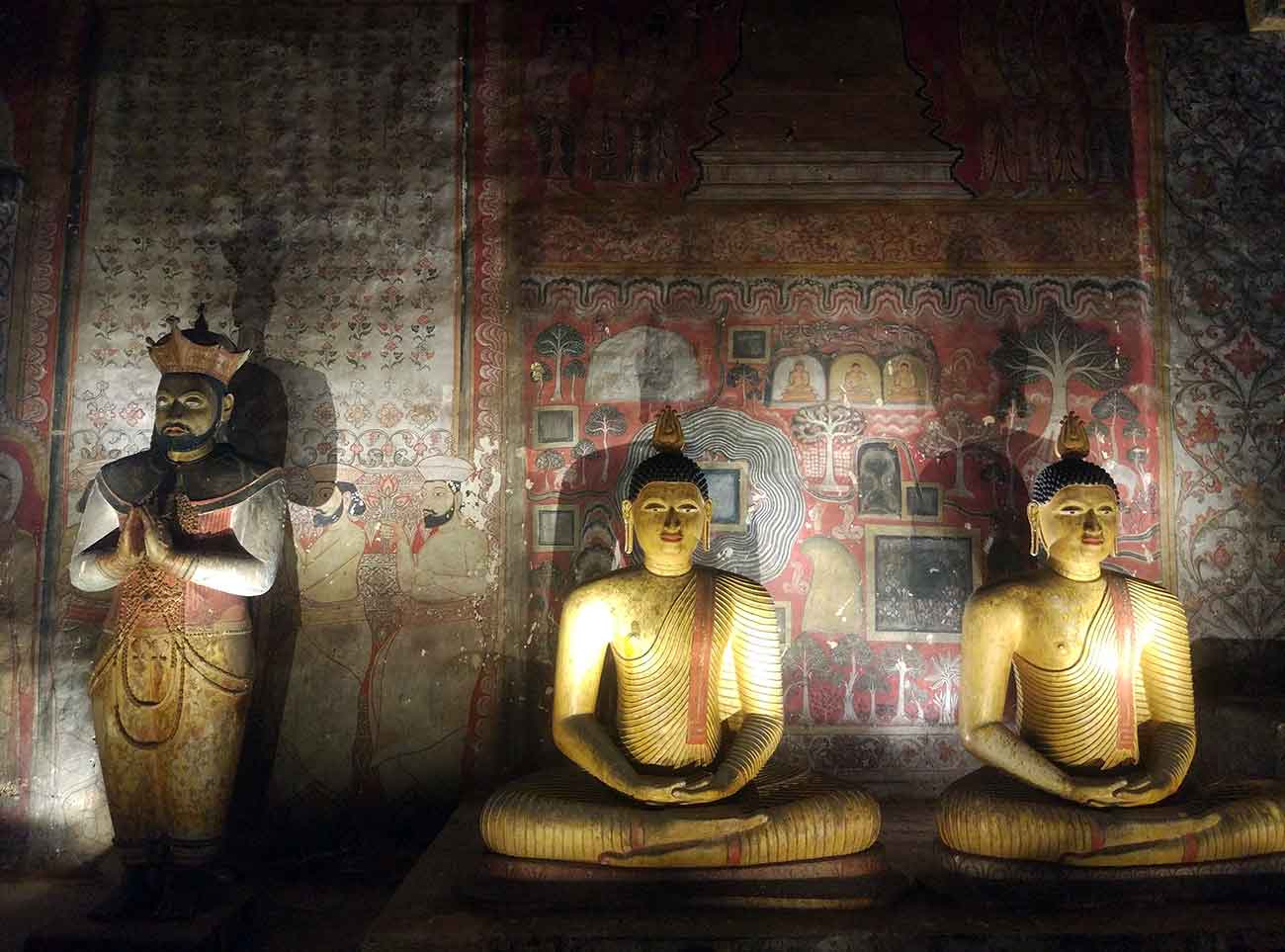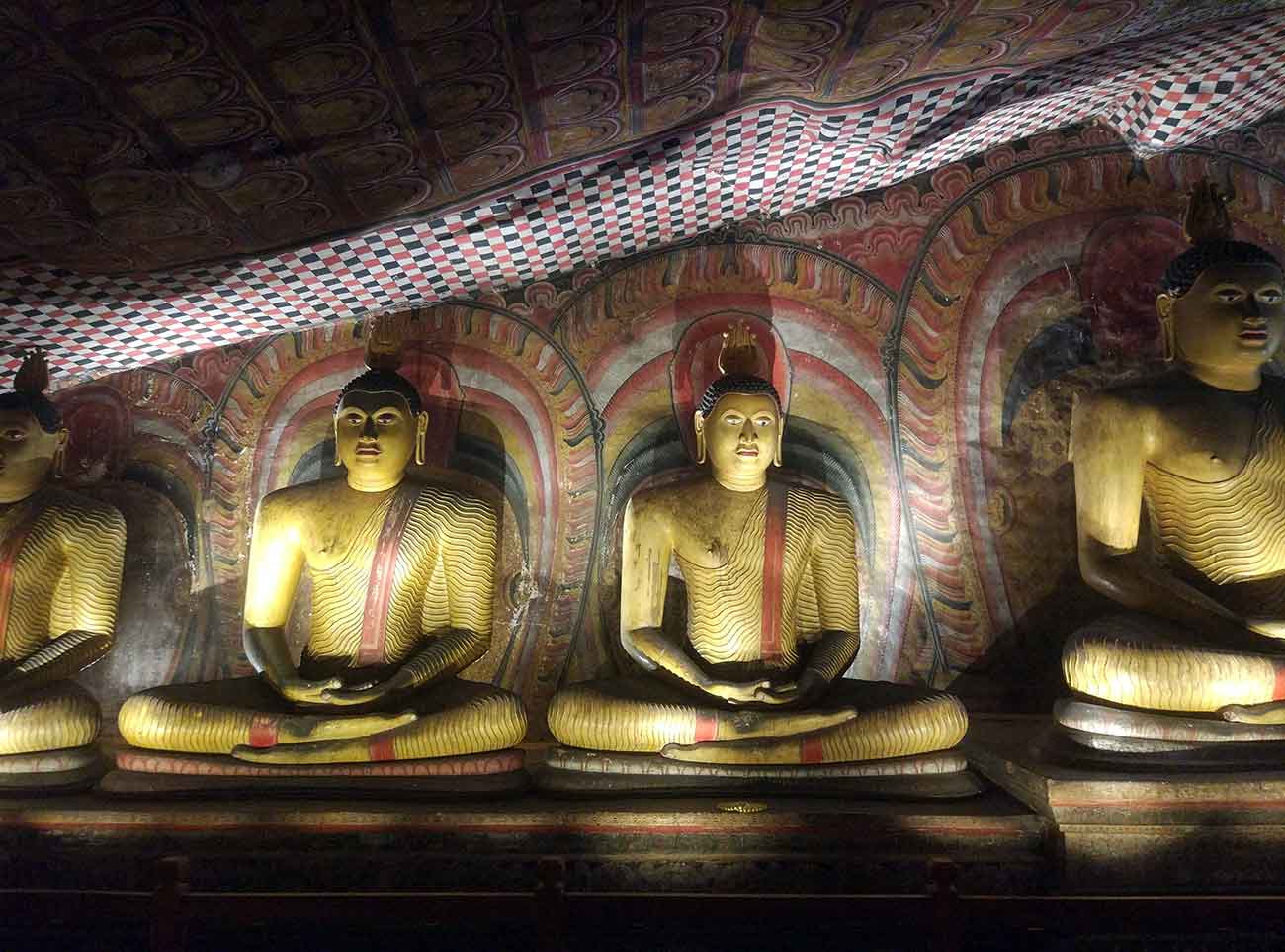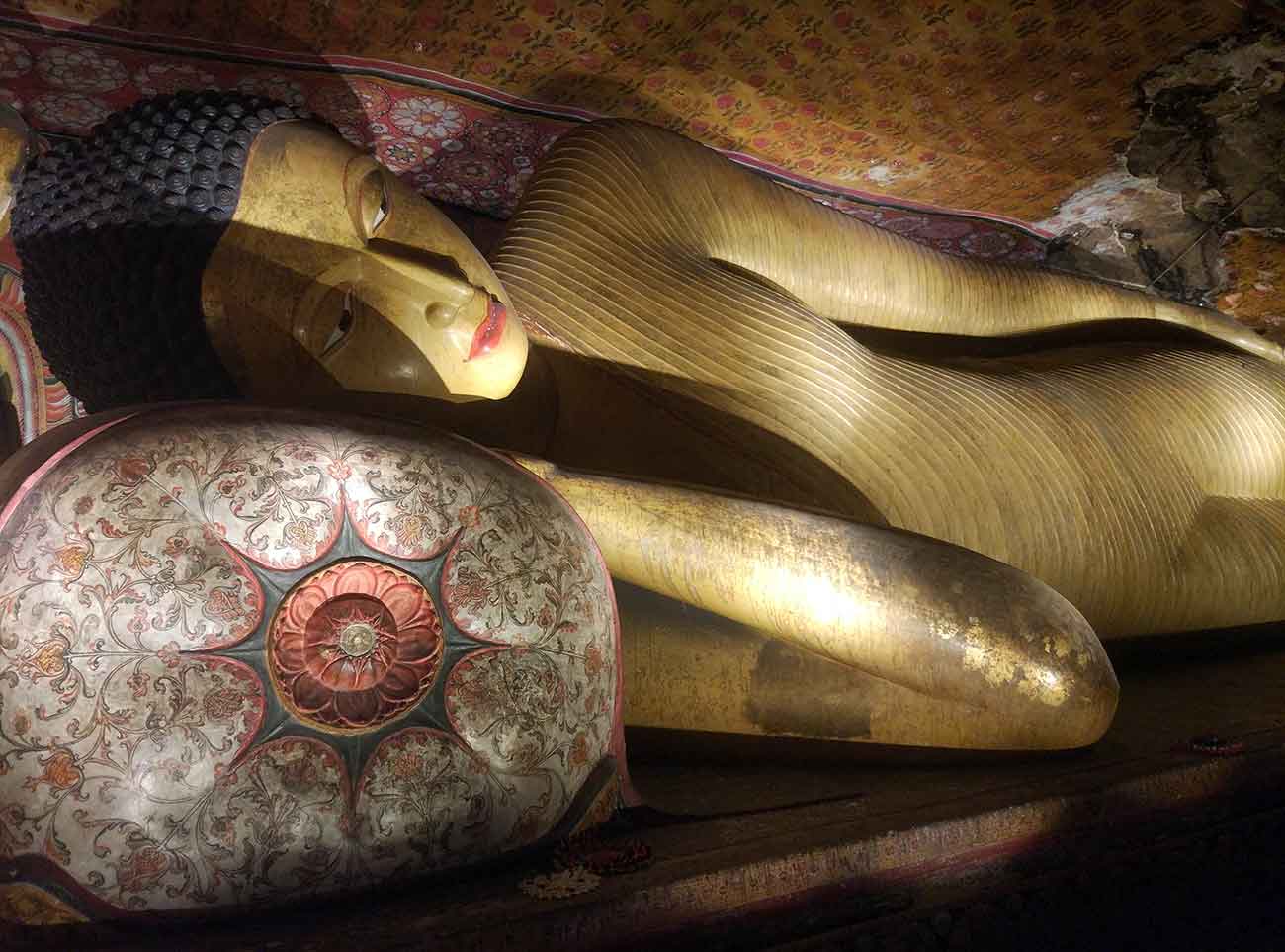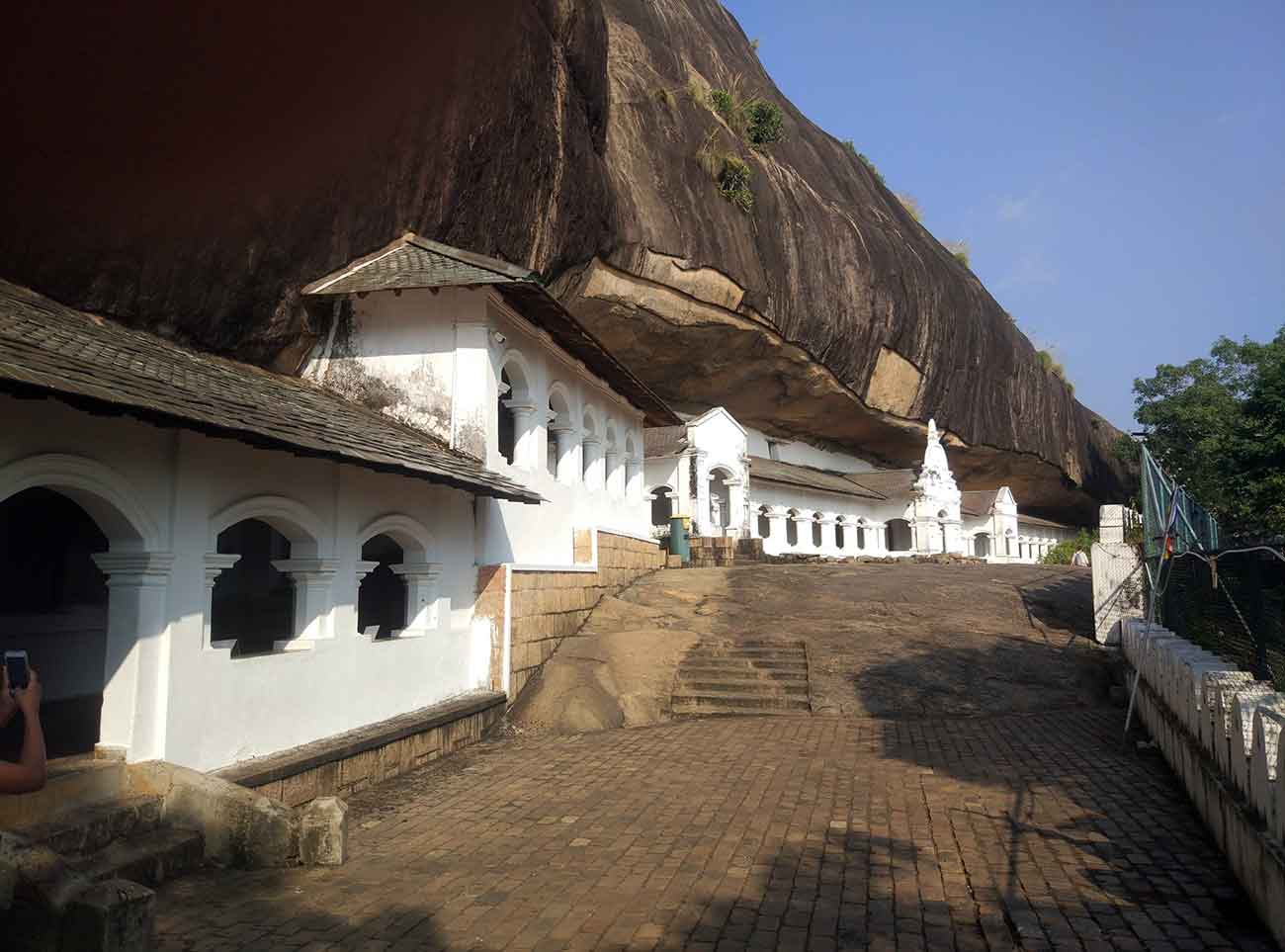Read The Golden Temple Dambulla travel blog article
The Historical Golden Temple of Dambulla
Dambulla cave temple, also known as the Golden Temple of Dambulla is a World Heritage Site, is situated in the central part of the country. This site is situated 148 kilometers east of Colombo , 72 kilometers north of Kandy and 43 km north of Matale. Dambulla is the largest and best-preserved cave temple complex in Sri Lanka. The rock towers 600ft over the surrounding plains. There are more than 80 documented caves in the surrounding area. Major attractions are spread over five caves, which contain statues and paintings. These paintings and statues are related to Gautama Buddha and his life. There are a total of 151 Buddha statues, three statues of Sri Lankan king, 2 statues of gods (Vishnu & Saman) and 2 statues of Natha Maithree Bodisatva. The murals cover an area of 22,000 sq. ft. Depictions on the walls of the caves include the temptation by the demon Mara, and Buddha’s first sermon.
Prehistoric Sri Lankans would have lived in these cave complexes before the arrival of Buddhism in Sri Lanka as there are burial sites with human skeletons about 2700 years old in this area, at Ibbankatuwa near the Dambulla cave complexes. This temple complex dates back to the first century BCE.
It has five caves under a vast overhanging rock, carved with a drip line to keep the interiors dry.
- Dev-raja Viharaya (Monastery of the Divine)
- Maha-raja Viharaya (Monastery of the Great Kings)
- Maha-aluth Viharaya (Great New Monastery)
- Pashchima Viharaya
- Devana-aluth Viharaya (2nd New Monastery)
In 1938 the architecture was embellished with arched colonnades and gabled entrances. Inside the caves, the ceilings are painted with intricate patterns of religious images following the contours of the rock. There are images of the Lord Buddha and bodhisattvas, as well as various gods and goddesses.
the best-preserved ancient edifice in Sri Lanka
The Dambulla cave monastery is still functional and remains the best-preserved ancient edifice in Sri Lanka. This complex dates from the third and second centuries BC, when it was already established as one of the largest and most important monasteries. Valagamba of Anuradhapura is traditionally thought to have converted the caves into a temple in the first century BC. Exiled from Anuradhapura, he sought refuge here from South Indian usurpers for 15 years. After reclaiming his capital, the King built a temple in thankful worship. Many other kings added to it later and by the 11th century, the caves had become a major religious center and still are. Among them King Nissanka Malla of Polonnaruwa gilded the caves and added about 70 Buddha statues in 1190. The statues were also painted in gold during his time and thus the temple was called the “Golden Temple”. During the 18th century, the caves were restored and painted by the Kingdom of Kandy.
The Caves
The temple is composed of five caves of varying size and magnificence. The caves, built at the base of a 600ft high rock during the Anuradhapura (1st century BC to 993 AD) and Polonnaruwa times (1073 to 1250), are by far the most impressive of the many cave temples found in Sri Lanka.
Access is along the gentle slope of the Dambulla Rock, offering a panoramic view of the surrounding flat lands, which includes the rock fortress Sigiriya, 19 km away. Dusk brings hundreds of swooping swallows to the cave entrance. The largest cave measures about 52m from east to west, and 23m from the entrance to the back, this spectacular cave is 7m tall at its highest point. Hindu deities are also represented here, as are the kings Valagamba, Nissankamalla, Keerti Sri Rajasingha and Ananda – the Buddha’s most devoted disciple.
The First Cave
The first cave is called Devaraja lena (lena in sinhalese meaning cave), or “Cave of the Divine King.” An account of the founding of the monastery is recorded in a 1st-century Brahmi inscription over the entrance to the first cave. The door to this narrow and small cave is adorned by a traditional “Makara Thorana” (Dragon Arch). This cave is dominated by the 27ft long reclining statue of the Buddha, hewn out of the rock. It has been repainted countless times in the course of its history, and probably received its last coat of paint in the 20th century. There is total of 7 (seven) statues within this cave. Buddha, during his last illness, about to enter Parinirvana (the stage of great salvation after death that can only be attained by enlightened souls). At his feet is Buddha’s favorite pupil, Ananda; at his head, Vishnu, said to have used his divine powers to create the caves, and 4 other samadi statues.
The five main characteristics of identifying a statue as the Buddha in his death chamber includes,
- Semi-closed eye lids
- Lack of rays depicted around the Buddha’s head
- Abdomen that is withdrawn inside
- The foot that is slightly drawn back
- The knee that is slightly bent forward
Finished in King Valagamba’s reign, a special point worth noting is that villages and their names are based upon Buddha’s anatomy.
Another characteristic of the statue of Ananda, is the presence of a wick use to light lamps, between his fingers. This signifies the uncertainty of life and certainly that death comes to everyone.
The Second Cave
In the second and largest cave, Maharaja lena “Cave of the Great Kings, in addition to 16 standing , 39 seated statues and 1 reclining statue of Buddha, are the gods Saman and Vishnu, which pilgrims often decorate with garlands, and finally statues of King Valagamba, who honored the monastery in the 1st century BC., and King Nissanka Malla, responsible in the 12th century for the gilding of 50 statues, as indicated by a stone inscription near the monastery entrance. ” The Buddha statue hewn out of the rock on the left side of the room is escorted by wooden figures of the Bodhisattvas Maitreya and Avalokiteshvara or Natha. There is no other place where statues of, Maithree , whose is worshiped by Theravada followers, and Natha, whose is worshipped by Mahayana followers, are occupying the same place.
Distinctive tempera paintings on the cave ceiling dating from the 18th century depict scenes from Buddha’s life, from the dream of Mahamaya to temptation by the demon Mara. The ceiling has 25 section which has a total of 1012 paintings of Buddha. Further pictures relate important events from the country’s history.
There is also a dagoba, which is named “Galkuduseya”, literally meaning Dagoda made of rock dust. It is said when they were sculpting the reclining Buddha statue in the “Divine King’s Cave” (1st Cave) the rock and dust that were chipped away was used to build this small dagoba.
At the center of the cave there is a large cauldron, which has a special significance. It collects a steady streams of drops of water out of a crack in the ceiling and it never dries up. It is said to have healing powers.
The Third Cave
The third cave, the Maha Alut Vihara, the “Great New Monastery” acquired ceiling and wall paintings in the typical Kandy style during the reign of King Kirti Sri Rajasinha (1747–1782), the famous Buddhist revivalist. In addition to the 50 Buddha statues, there is also a statue of the king. Within these shrine rooms is representative of many epochs of Sinhala sculpture and Sinhala art. The Buddha statues are in varying sizes and attitudes – the largest is 15 meters long. One cave has over 1,500 paintings of Buddha covering the ceiling.
Conservation
Conservation at the Dambulla Temple Complex has primarily concentrated on the preservation of its mural schemes. Senake Bandaranayake reports that the schemes were cleaned during an initial conservation project during the 1960s which involved the cleaning of the murals and the application of a protective coating.
Subsequent conservation strategies at the Dambulla Temple Complex have focused on maintaining the integrity of the existing complex which has remained unaltered since the reconstruction of the temple veranda in the 1930s. This strategy was agreed during a collaborative project between UNESCO, The Cultural Triangle Project of Sri Lanka and the Temple Authorities of Dambulla.
As the Dambulla Temple remains an active ritual centre, the conservation plans were directed at improving the infrastructure and accessibility of the site in accordance with its UNESCO world heritage status. This involved the renovation of hand-cut paving within the complex and the installation of modern lighting. Further construction of a museum and other tourist facilities are located away from the historical complex.
Read The Golden Temple Dambulla travel blog article


